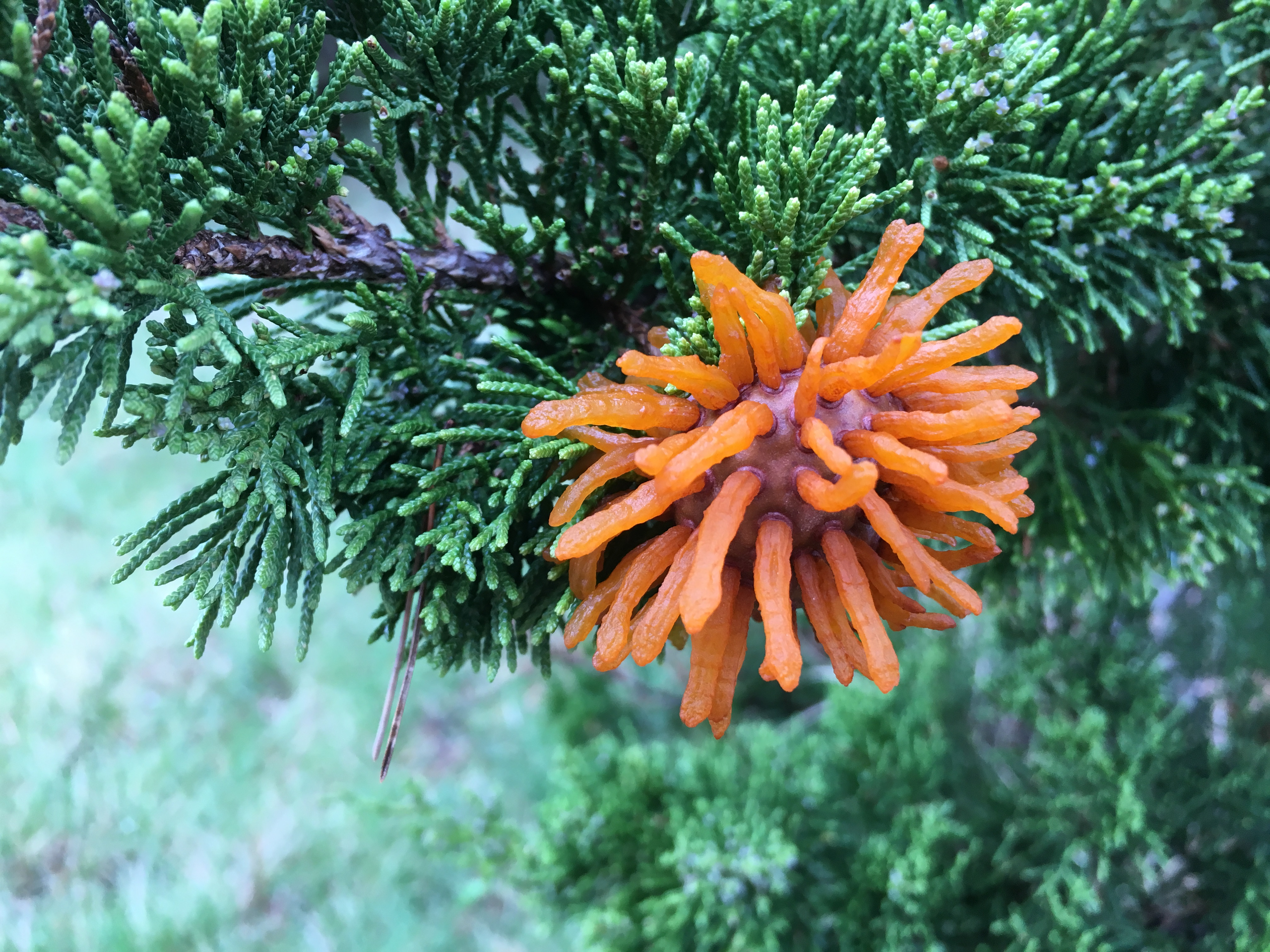
Witches' broom
Gymnosporangium
What is Witches' broom (Gymnosporangium)?
Witches' broom (Gymnosporangium) is a plant disease characterized by the formation of dense clusters of dwarfed, weak shoots, resembling a broom, on infected plants. It is caused by rust fungi of the genus Gymnosporangium. The disease has a wide distribution, occurring in various regions worldwide. It affects numerous plant species, including apple, pear, hawthorn, quince, cedar, and juniper trees. Symptoms include the development of abnormal brush-like clusters of shoots near the same point on the plant, along with twig and branch dieback. Leaves and shoots may appear distorted, discolored, or stunted.
How does Witches' broom (Gymnosporangium) occur?
Witches' broom (Gymnosporangium) reproduces through spore dispersal between two host plants. Fungal spores are released from juniper or cedar trees and carried by wind or rain to infect susceptible plants. In the infected plants, the fungus forms witches' broom clusters, which produce spores. These spores can then infect juniper or cedar trees, completing the reproductive cycle. This spore dispersal mechanism enables the continued spread and persistence of Gymnosporangium.
Symptoms
1 - Impacts on Plants and Environment
• Witches' broom (Gymnosporangium) can weaken plants, leading to stunted growth, reduced fruit production, and branch dieback. • In agricultural settings, it can decrease crop yields. The disease's spread can alter plant communities and ecological interactions, potentially impacting biodiversity. • It has a minimal direct impact on the soil but can affect nutrient cycling through plant debris accumulation.
Solutions
1 - Prevention
• Plant Selection: Choosing resistant varieties or species. • Sanitation: Removing and destroying witches' broom structures and infected plant material. • Pruning: Pruning affected branches and witches' brooms.
2 - Management
• Removal: Removing or distancing plants from other susceptible plants. • Cultural Practices: Promoting plant vigor through proper watering, fertilization, and plant health management. • Integrated Pest Management: Monitoring, controlling insect vectors or mites, and implementing appropriate measures.
3 - Chemical Treatment
• Fungicides commonly used for the management of witches' broom (Gymnosporangium) include copper-based fungicides, triazole fungicides (e.g., tebuconazole, propiconazole), and strobilurin fungicides (e.g., azoxystrobin, pyraclostrobin). • It is crucial to carefully follow label instructions and consult with local experts for specific fungicide recommendations based on your region and affected plant species.
